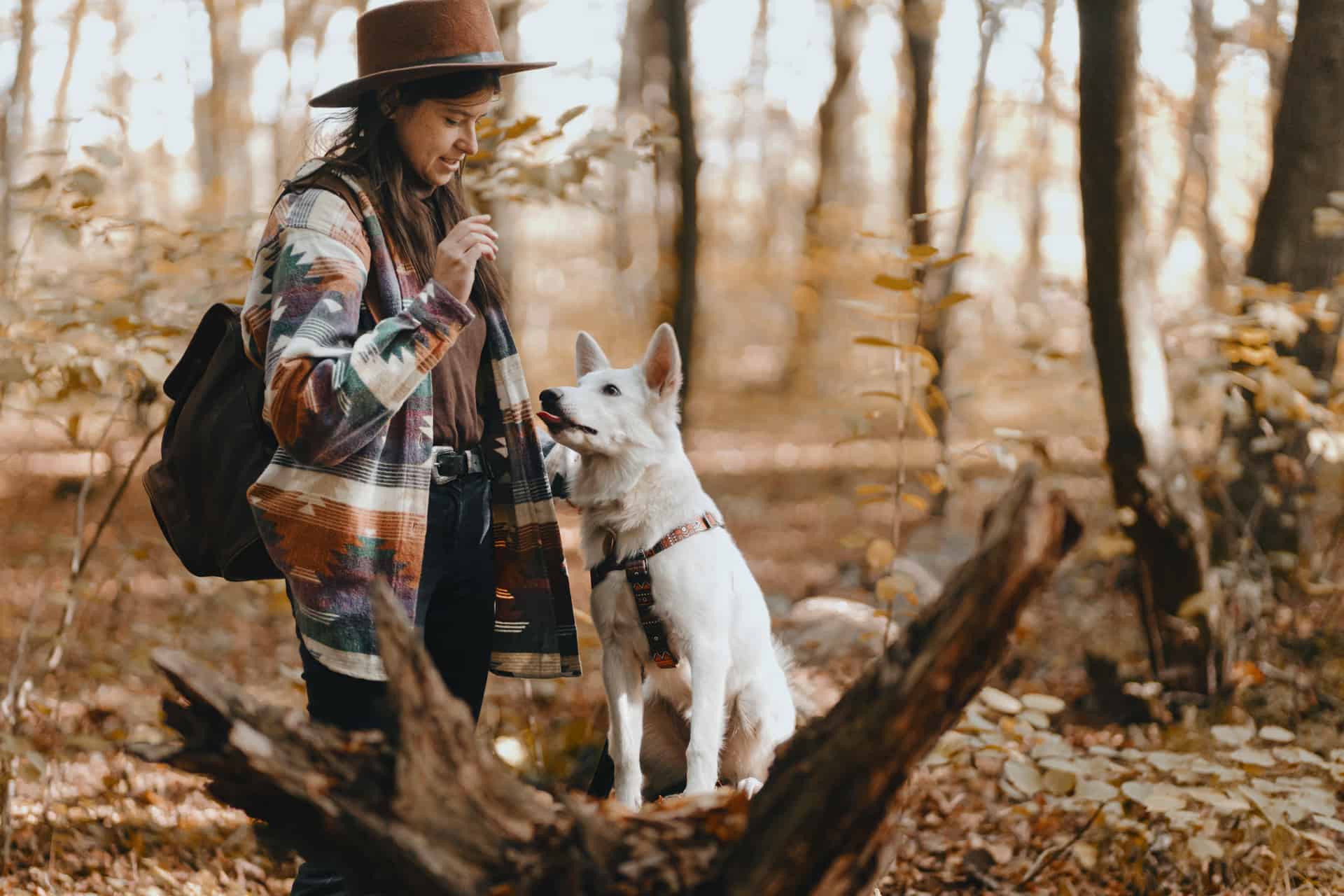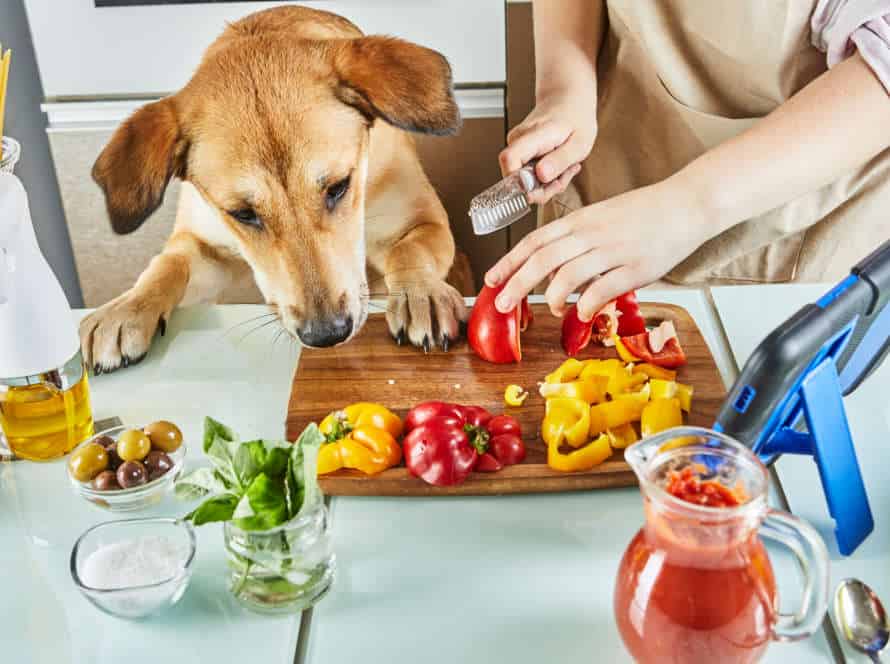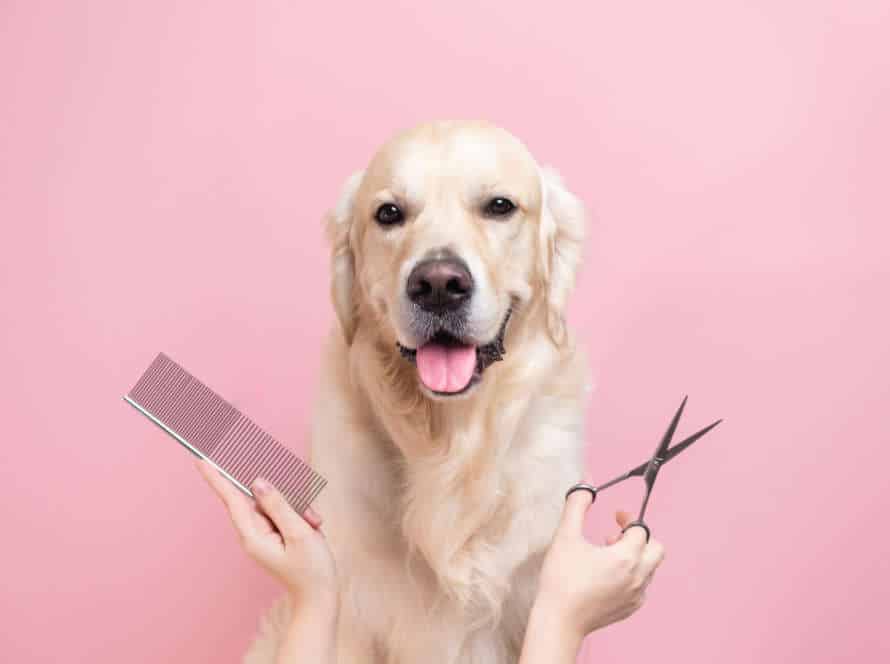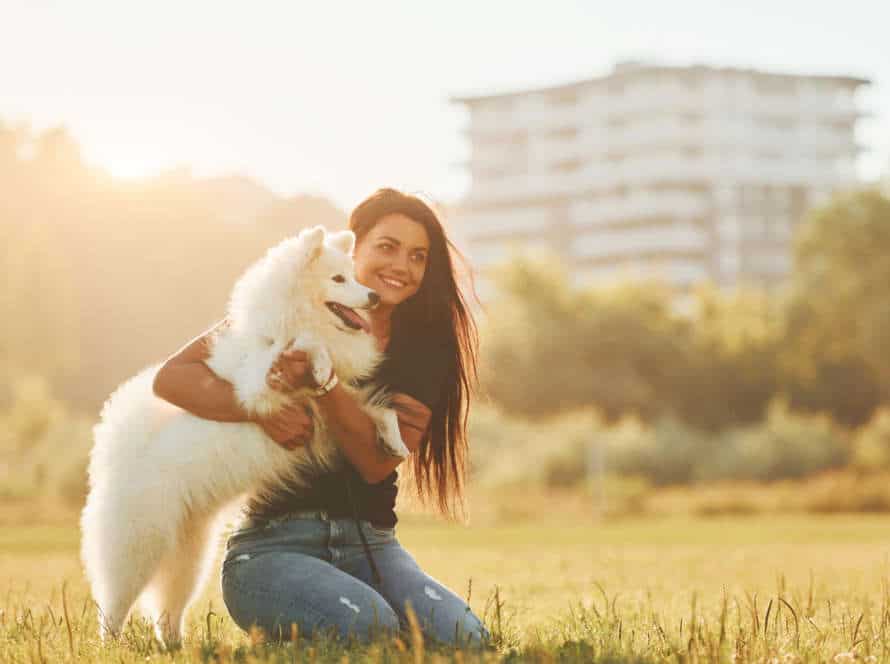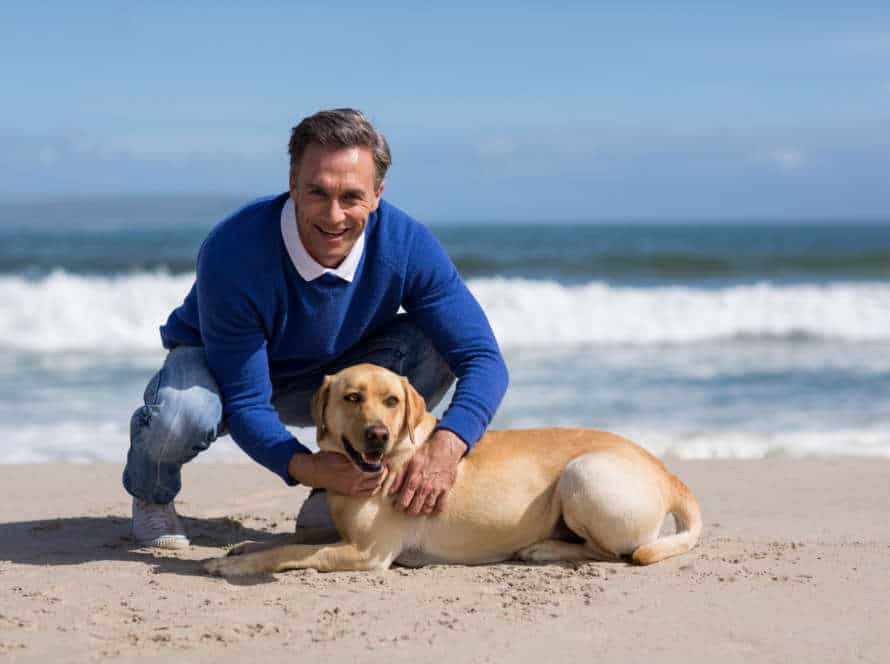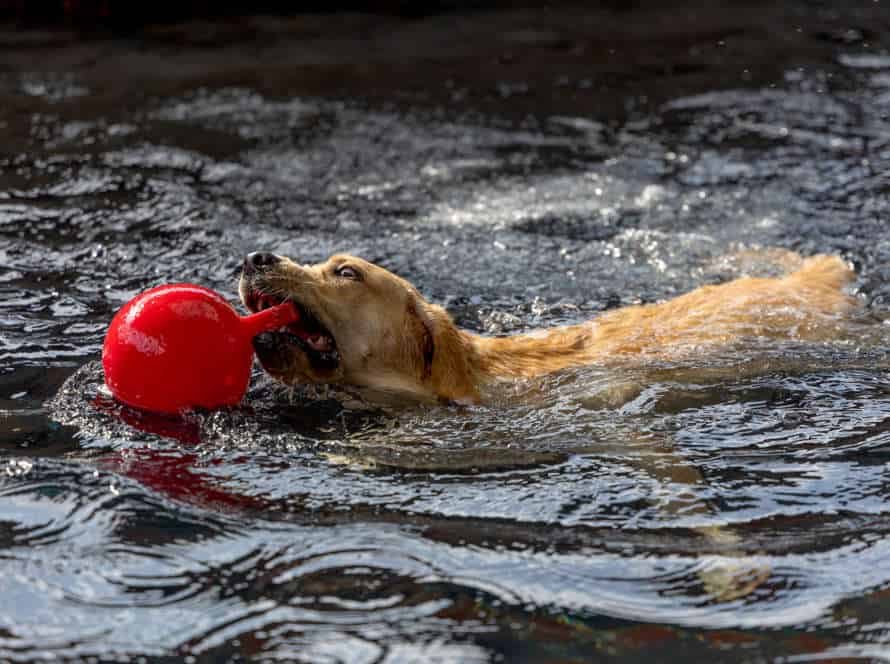Positive Reinforcement: Unleashing the Benefits for Your Dog
Positive reinforcement training is great for dogs! It helps them learn new behaviors and reinforces good habits. Plus, it has many mental and emotional benefits. Here’s what positive reinforcement can do for your pup:
- Build confidence – When your dog is praised for positive behaviors, their self-esteem and confidence skyrocket!
- Create a stronger bond – Positive interactions during training strengthens the bond between you and your pup.
- Reduce stress and anxiety – Rewards create a stress-free and enjoyable environment for your pup.
- Encourage good behavior – This technique encourages your pup to repeat good behaviors, making training more effective.
Remember, positive reinforcement isn’t just about teaching obedience – it’s also about nurturing your pup’s mental and emotional wellbeing.
Pro Tip: Always use treats and praise as rewards to encourage positive behavior, never punish or use negative reinforcement.
Understanding Positive Reinforcement Training
Positive reinforcement training is a way to reward good behavior in animals. You offer treats, verbal praise, or physical contact when the animal does something you want them to do. This encourages them to repeat the behavior. By understanding positive reinforcement, pet owners can use it to teach their pooch good habits.
What is Positive Reinforcement?
Positive reinforcement is a way to train behavior. It rewards good behavior, instead of punishing bad behavior. This method works with dogs by giving treats, praise, and play when they do something right. For example, sitting, staying, and following commands.
Negative behaviors, such as barking or jumping, can be discouraged by redirecting the attention and rewarding good behavior.
Benefits of positive reinforcement training are many. It strengthens the bond between dog and owner. Improves the dog’s behavior and overall well-being. Reduces stress and anxiety levels too.
Remember, positive reinforcement should be consistent and used with proper training techniques to get long-lasting results.
How Does it Work?
Positive reinforcement training is a great way to encourage good behavior in dogs. It rewards them for doing something right, with a treat, praise or another reward. The dog then starts to link good behavior with rewards and will repeat it more often. This method can help build trust and strengthen the bond between you and your pup.
Plus, it can be used to teach obedience, tricks, or even address behavioral issues. However, it’s essential to keep reinforcement consistent, clear, and fair.
Pro Tip: Positive reinforcement training can ensure you have a happy and loyal companion for years!
Benefits of Positive Reinforcement
Positive reinforcement is a technique that rewards good behavior with treats, praise, or affection. This training method has many benefits!
- It strengthens the bond between the dog and owner, as it creates trust and positive associations.
- It encourages dogs to repeat actions with good outcomes.
- It boosts the dog’s confidence and reduces anxiety-like aggression or fear.
- It’s humane, compared to punishments that can cause physical and emotional harm.
By using positive reinforcement, pet owners can create a happy environment, build a strong relationship, and enjoy life together. Pro tip: Consistency is key. Be patient and stay committed to the process, then you will see the results.
Implementing Positive Reinforcement in Training
Positive reinforcement is a great way to train your pup! Instead of punishment, rewards and praise are used to shape their behaviour. It can be really beneficial for your canine companion, both mentally and physically. Let’s take a look at how you can use positive reinforcement in training and the advantages it brings.
Selecting the Right Reward
For successful positive reinforcement training, it’s important to select the right reward. Here are some tips:
- Give your pup treats they love, like meat, cheese or peanut butter.
- Give small rewards so they can get back to training quickly.
- Be consistent with rewards each time they show good behavior.
- Use verbal praise and physical affection too, not just treats.
Remember, the reward must be enticing enough to motivate your pup, but not so distracting that it takes their focus away from training.
Timing and Consistency in Rewarding
Timing and consistency are two factors that are essential for positive reinforcement training of dogs. This approach rewards the pup for good behavior, instead of punishing it for bad behavior. The reward must come within 3 seconds of the desired behavior, to mark it in the pooch’s memory. Consistency is also very important. The rewards must stay the same in both quality and quantity, so the pup knows to repeat the behavior. Inconsistency will make them frustrated and confused, and will slow down the learning process. By using positive reinforcement with proper timing and consistency, you will be able to reap its benefits – better behavior, more comfort and a stronger bond with your pup!
Alternatives to Treats in Positive Reinforcement
Treats are a great way to use positive reinforcement when training your pup. There are other alternatives too!
- Verbal praise? Dogs love to hear their owner’s voice. Give them encouragement and they’ll learn quicker.
- Toys? Have fun with your dog and use toys as a reward. It’s a great way to bond and reinforce good behavior.
- Physical affection? Give your pup some petting or belly rubs. It will strengthen the bond between the two of you.
- Life rewards? Let your pup take part in activities they enjoy. Walks or trips to the dog park can be a great way to reward them.
When you use these alternatives, as well as treats, you’ll create a more rounded learning experience for your pup. Plus, you’ll have an even stronger bond with your furry friend!
Common Positive Reinforcement Training Techniques
Positive reinforcement is a great way to train your pup! Reward desired behaviors by giving treats, verbal praise, toys and games. Check out the most popular techniques of positive reinforcement! Offer treats and verbal applauds, and provide toys and games as rewards. All of these will help you create a happy pup.
Clicker Training
Clicker training is a popular, humane, and successful way to teach your pup new behaviours. When they do something you like, like coming when called, press the clicker and give them a treat, toy, or praise. They learn that the clicker means good stuff! Clicker training can be used for obedience, agility, tricks, and even problem behaviours like barking and jumping. Positive reinforcement helps create a strong bond between you and your pup – unleash the power of clicker training!
Target Training
Target training is a positive reinforcement technique for dogs. It involves teaching your pup to touch a designated spot or “target” when asked. This technique can be used for basic obedience and more advanced tricks.
Here are the steps for target training:
- Choose a target object, like a lid or clicker.
- Hold it out and wait for your dog to touch it.
- Reward with treats and praise when they do.
- Move the object further away, and use the command to encourage your pup.
- With practice, your pup will associate the target with the desired behavior.
Target training is an effective and humane way to train, strengthening your bond with your furry friend.
Shape Training
Shape training is a positive reinforcement technique. You break down a behavior into small steps, then reward your pup for making progress. Common positive reinforcement techniques for shape training include:
- Clicker training: Use a clicker to mark the exact moment when your dog does the desired behavior. Then reward them.
- Luring: Entice your dog with a treat to do the desired behavior. This is great for complex tricks like “roll over” or “play dead”.
- Target training: Teach your dog to touch a certain object with their nose or paw. Great for redirecting unwanted behaviors or teaching new skills.
- Shaping: Break down the desired behavior into steps and reward your pup for progress. This can be used to teach a wide range of tricks.
Pro tip: Be consistent and patient. Reward your pup even if they haven’t fully achieved the desired behavior yet.
Tips for Effective Positive Reinforcement Training
Positive reinforcement is great for training pooches! It encourages desirable behavior and ignores bad behavior. Benefits include: strengthening the bond between you and your pup, promoting good behavior and building trust. Here are some tips to use positive reinforcement in dog training:
Begin Training at Early Age
Beginning pup training early can have a big effect on their behavior and progress. Pups have a shorter focus span, making it difficult to keep them involved in training sessions. But, with persistence and time they can learn new tricks and form good habits.
Positive reinforcement training is one of the most effective and kind ways to train your dog. This method focuses on giving praise, treats, or toys for good conduct, rather than punishing bad behavior. Here are a few tips for successful positive reinforcement training:
- Keep sessions short and frequent, around 5-10 minutes and multiple times per day.
- Use an excited, high-pitched voice to praise and reinforce good behavior.
- Have treats and toys close at hand and reward your dog after demonstrating positive behavior.
- Be steady with your commands and rewards.
- Avoid using physical punishment or scolding, as this can cause fear and stress in your dog.
Pro tip: Patience is essential when training your dog. Don’t hurry the process, and always keep your sessions positive and rewarding.
Maintain Short Training Sessions
Short training sessions are key for positive reinforcement training with dogs.
No more than 15 minutes, with frequent breaks. Short helps the dog focus, not get bored or stressed.
Start with commands your pup knows, then add new ones.
Use treats, praises, and play for good behavior.
Every pup is different, observe reactions and adjust training.
Pro tip: Positive reinforcement is not only about teaching commands, but also building a strong bond. Make the training fun and bonding!
Adjusting Rewards over Time
Adjusting rewards over time is essential for good dog training with positive reinforcement. Too many or unchallenging rewards can make dogs unresponsive. Here are tips to adjust rewards:
- Gradually Reduce Food Treats: Lower the treats given to your dog for successful reinforcement. Go for treats with fewer calories. Praise can be a substitute.
- Introduce Unpredictability: Make training different and fun by rewarding random behavior every 10 repetitions.
- Try Non-Food Rewards: Playtime, petting, verbal praise, trips, anything your dog likes – use them as rewards.
Pro Tip: Use simple commands and timely, varied rewards to reinforce positive behavior. This will help with effective positive reinforcement training.
Positive Reinforcement vs. Punishment
Positive reinforcement – a top dog training choice! This strategy involves giving treats, toys and words of praise when good behavior is shown. Alternatively, punishment-based dog training sees negative outcomes as teaching aids. Let’s explore the advantages of each approach!
Negative Effects of Punishment
Punishment may seem like an easy way to stop undesired doggy behaviors, but it can really have some awful effects on their well-being and behavior. Positive reinforcement is a much better, and kinder, method of training.
Listed below are a few of the bad things punishment can cause:
- Anxiety and fear: Dogs that are punished might start to show aggression or avoidance due to feeling anxious or scared.
- No trust: The relationship between dog and owner can be damaged when a dog loses its trust in them.
- Learned helplessness: If punished too often, a dog may just give up trying to avoid it.
- Physical harm: Punishment can cause physical injuries, as well as long-term health issues.
On the other hand, positive reinforcement, like rewarding good behavior, is an effective way to train your pup and strengthen your bond.
Benefits of Positive Reinforcement over Punishment
Positive reinforcement is much better than punishment when training your pup. Here are some of its advantages:
- Builds Trust & Confidence: Positive reinforcement helps form a bond of trust between you and your dog. Reward good behavior with treats, compliments and love to encourage them to repeat it.
- Reduces Bad Habits: Punishing your dog for bad behavior may stop it temporarily, but doesn’t tell them what they should do instead. Positive reinforcement teaches them to do desirable and rewarding behaviors.
- Creates a Positive Environment: Positive reinforcement is a kind, effective and fun way to train your dog. They can sense your emotions and respond well in a cheerful and confident atmosphere.
- Strengthens the Bond: The success of positive reinforcement is that it builds a strong bond between you and your pup. You become their source of joy, and they bring companionship and happiness into your life. Pro tip: Consistency is key. Be patient and reward good behavior frequently to get the best results.
Finding the Right Balance in Training Techniques
Finding the perfect balance in training is vital for successfully teaching your pup and solidifying your bond. Positive reinforcement and punishment can both be powerful tools, yet positive reinforcement has more rewards for your furry friend.
Positive reinforcement involves rewarding your dog’s good behavior with treats, toys or praise when they obey commands. This type of training encourages your pup to repeat beneficial behaviors and strengthens the trust and relationship between you two.
On the contrary, punishment includes using an unpleasant stimulus to prevent bad behaviors. While this can be effective in certain scenarios, it can make your pup fearful and cause damage to your relationship.
To guarantee a healthy relationship with your pet, use positive reinforcement to encourage their good behavior and avoid punishment unless it’s absolutely essential. Not only will you be an efficient teacher, but you’ll also have a content and well-behaved furry companion by your side.
Pro tip: Remain consistent with your training techniques and you’ll recognize a big improvement in your dog’s behavior.
Frequently Asked Questions
Q: What is positive reinforcement for dogs?
A: Positive reinforcement for dogs is a training technique that involves rewarding desirable behaviors to encourage their repetition. Rewards can include treats, playtime, and verbal praise.
Q: Why is positive reinforcement important for dogs?
A: Positive reinforcement is important for dogs because it is an effective and humane way to train them. It strengthens the bond between the dog and owner and helps to prevent unwanted behaviors from developing.
Q: How do I use positive reinforcement with my dog?
A: To use positive reinforcement with your dog, you should start by identifying the behaviors you want to encourage. Then, you can reward your dog with treats, playtime, or verbal praise when they exhibit those behaviors. It is important to be consistent and patient when using positive reinforcement.
Q: Can positive reinforcement be used to train any dog?
A: Yes, positive reinforcement can be used to train any dog, regardless of their breed or age. However, the training techniques and rewards used may vary depending on the individual dog and their personality.
Q: What are some benefits of using positive reinforcement with dogs?
A: Some benefits of using positive reinforcement with dogs include improved behavior, increased confidence, and strengthened bond between the dog and owner. Using positive reinforcement can also reduce anxiety and stress in dogs.
Q: Are there any potential drawbacks to using positive reinforcement?
A: One potential drawback of using positive reinforcement is that it may not be effective for all dogs. Some dogs may require additional training techniques or may be more responsive to punishment-based training methods. It is also important to ensure that rewards used are appropriate for the dog’s health and well-being.

